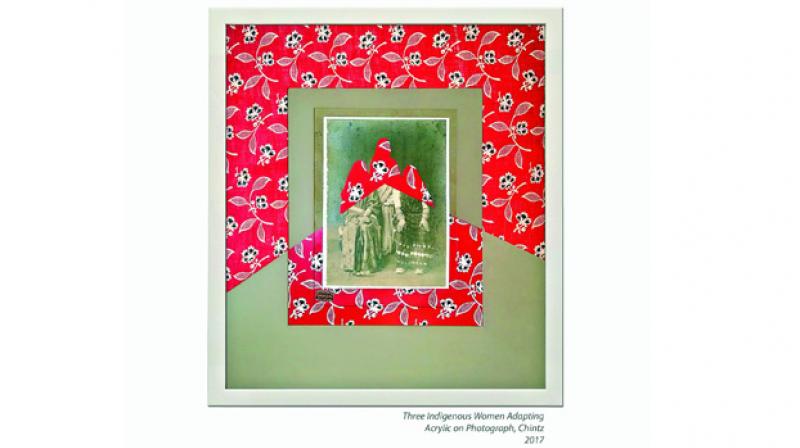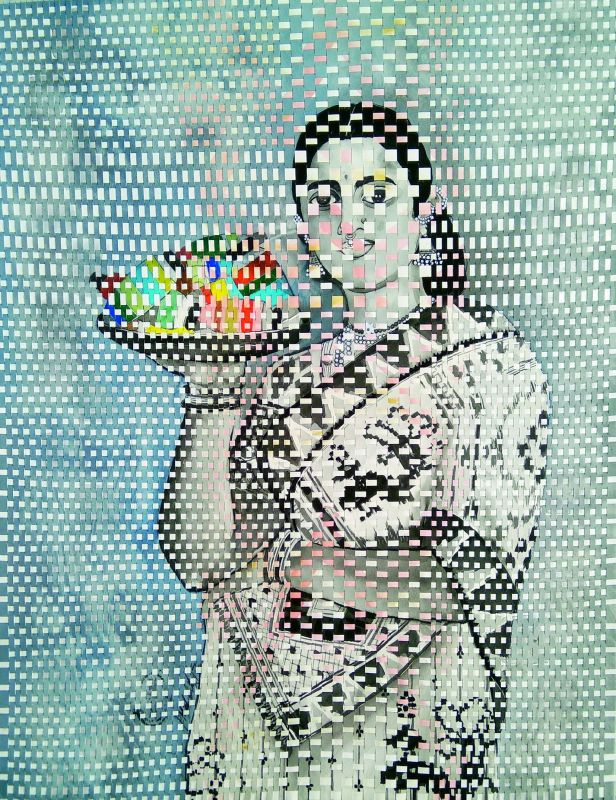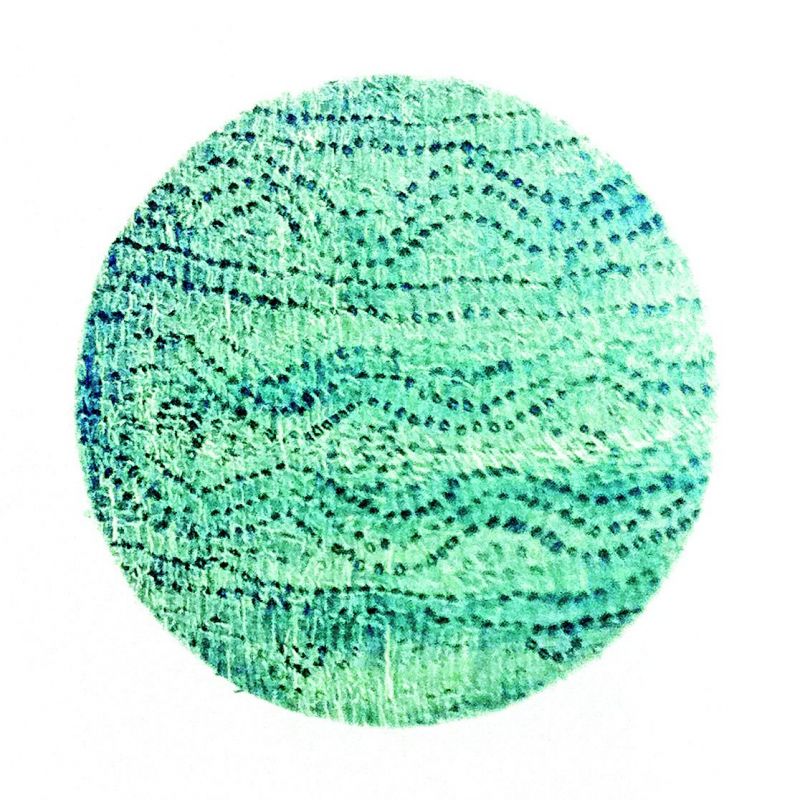Weaving art
Can textiles be used to create visual art? Five artists, participating in the show Memory Weave of Pixels and Patterns, have the answer.

Weaving is a complex process. You bring together different elements to make a larger picture. Sometimes that could include thread, other times, they include paints, memories and moments plucked from life. The five artists who have come together for the show — Memory Weave of Pixels and Patterns — Shrishti Art Gallery have taken a bit of both. The show was conceptualised three months ago for a talk on textiles. “We wanted to showcase contemporary art to Indian and international guests. The idea was to get artwork inspired by textiles,” says Lakshmi Nambiar, owner of the gallery where 25 odd works are on display.
 Weaved to perfection: Art by Hyderabadi artist Mahesh Pottabathini
Weaved to perfection: Art by Hyderabadi artist Mahesh Pottabathini
The five artists worked on different elements. While Nidhi Khurana’s work is a super-imposition of maps and places she has visited, she also uses an embroidery ring to highlight an event that left a lasting imprint on her life. Nandan Ghiya uses one of the oldest Indian textile, the Chintz, in his photos, that he pixelates to represent how images and life has transformed over the years. Artist Sonia Jose creates cyanotypes, a photographic blueprint using textiles that recreate maps and landscapes, she also creates photographs without using a negative, while substituting it with real objects.
 Weaving memories: Work by artist Nidhi Khurana
Weaving memories: Work by artist Nidhi Khurana
Then you have Hyderabadi artist Mahesh Pottabathini’s works that are a layer of memories, tradition and experience. When you look at them closely, they look like an ikkat weave and he picked this technique from his father, a master weaver. Finally, you have the youngest artist in the show Shuchi Mehta. A self-taught artist, she creates art that reflects patterns of our thoughts. Referring to patterns as a manifestation of the mind and memory, she attempts to simplify thought processes and reduce complexities of emotions and situations.
 Bright and blue: Art work by Sonia Jose
Bright and blue: Art work by Sonia Jose
Talking about his art, Mahesh says, “I’ve been practising this technique for the last 15 years. Since I come from a family of weavers and I’ve worked on the loom, I couldn’t stay away from it.” Mahesh used two techniques from weaving — warp and weft. “Warp is the vertical thread in a roll, while weft is the horizontal one. So I create two paintings, cut them along the warp and weft and then merge them together to create a new work,” he explains.
While Sonia says, “My practice relates to personal and social environments and histories. It stems from a need to acknowledge and preserve lived, intimate and overlooked experiences from everyday life. My explorations with integrating textiles to make cyanotypes began in Baroda in the latter half of 2015. Veeranganakumari Solanki Jamwal, the curator of the show says, “When Lakshmi came to me with the show, I was a little worried about how we could pull it off within three months. We had to find artists who were working on this concept and who could create new works for us. But we did all of that. The work of these artists is not something that is generally found, their ideas and method of creating art is simply intriguing.”

